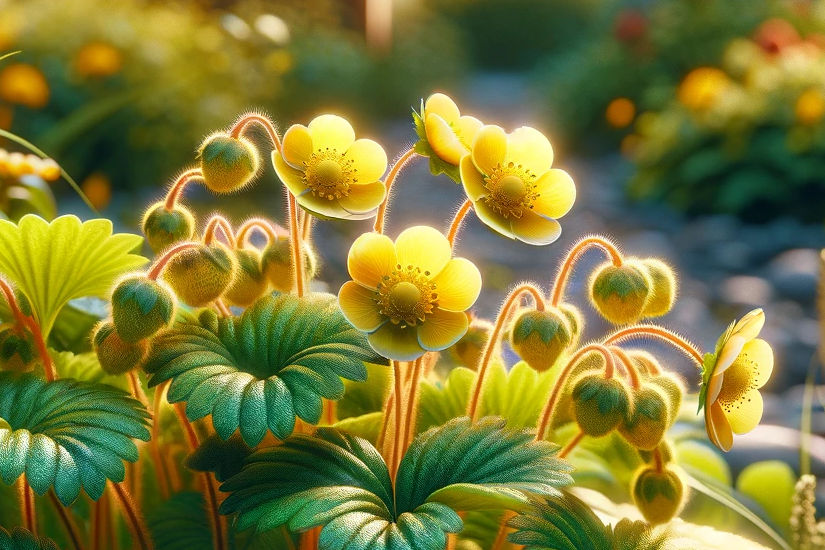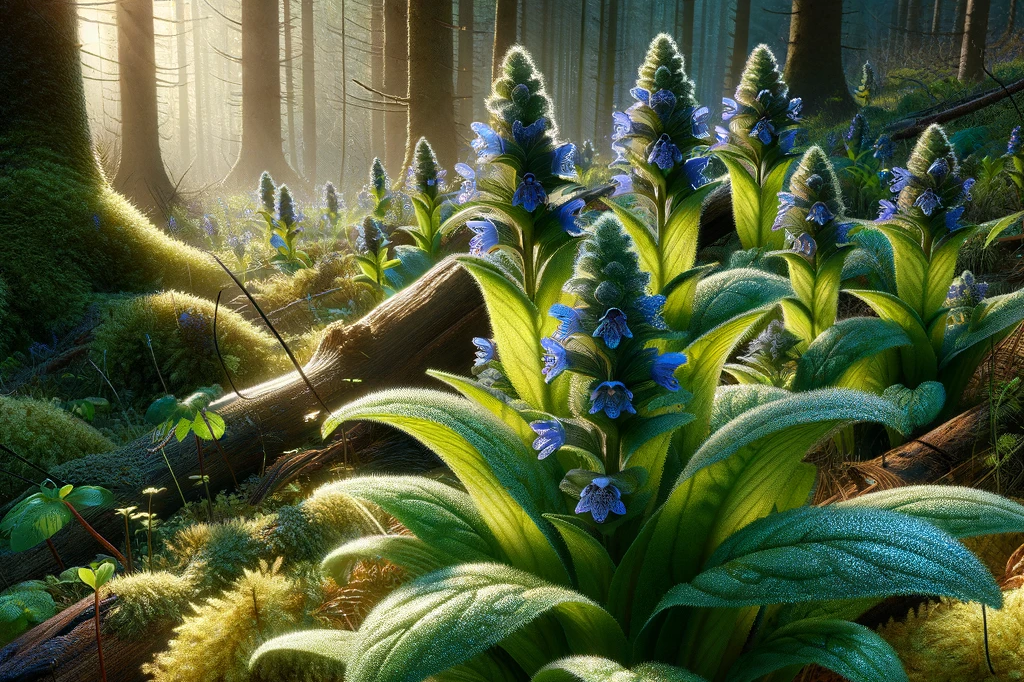Creeping groundsel

In the world of plants, there are numerous species that not only add beauty to our gardens, but can also play an important role in the nutrition and health of our four-legged friends. One of these plants is creeping groundsel (Ajuga reptans), a ground-covering plant that is often prized for its attractive flowers and as a low-maintenance garden plant. But what does the presence of this plant mean for your dog? This article takes an in-depth look at creeping groundsel to give you a full understanding of its benefits and potential risks to dogs.
What is creeping groundsel?
Creeping groundsel belongs to the labiate family and is characterized by its creeping growth habit, its dark green, shiny leaves and its intense blue, sometimes purple flowers. This plant is native to Europe, but can also be found as an ornamental plant in gardens in many other parts of the world. Due to its robustness and fast growth, creeping groundsel is often used as a ground cover to suppress unwanted weeds and create a green garden.
Advantages of creeping groundsel for dogs
Natural play and discovery areas
For dogs, creeping bindweed offers a natural and safe play area. The dense and robust nature of this plant can become a pleasant base for playing dogs without the risk of the plant being quickly destroyed.
Possible health benefits
In folk medicine, creeping groundsel is valued for its anti-inflammatory and antimicrobial properties. Although there is a lack of direct scientific evidence on its effects on dogs, moderate contact with the plant could potentially have positive effects on minor skin lesions.
Disadvantages and potential risks
Toxicity
Although creeping groundsel is not considered highly toxic, it contains certain compounds that can cause gastrointestinal distress in dogs, especially if consumed in excess. Symptoms of mild poisoning may include vomiting, diarrhea and lethargy.
Allergic reactions
As with many plants, there is a possibility of allergic reactions to creeping groundsel. Dogs with sensitive skin or a tendency to allergies could react to contact with the plant with skin irritation.
Choking hazard
Small parts of the plant, especially the flowers, could be eaten by curious dogs and pose a choking hazard. Although this is a rare occurrence, dog owners should ensure that their dog does not eat parts of the plant unsupervised.
A green friend with a caveat
Creeping groundsel is an attractive and robust plant that can bring joy to both your garden and your dog. However, as with all plants that grow near dogs, caution is advised. The potential health benefits of creeping toadflax should not be overstated, and the risks of poisoning or allergic reaction must be taken seriously. It is important to keep an eye on your dog and ensure that they do not eat too much of the plant or play with it. With the right amount of supervision, creeping groundsel can be a safe and enriching addition to your garden for your dog to enjoy.
If you notice any signs of hypersensitivity or poisoning in your dog, you should see your vet immediately. We are not a substitute for a vet, but we try to be as accurate as possible. Every dog reacts differently and we recommend you get a second opinion or consult your vet if in doubt.
Stay healthy and take good care of your four-legged friend!😊
Similar to Creeping groundsel
The golden strawberry, or physalis, belongs to the nightshade family and includes various species, some of which are edible, such as Physalis peruviana (cape gooseberry) and Physalis philadelphica...
Unfortunately, ivy is poisonous to dogs. Both the leaves and the berries contain saponins, which can lead to symptoms of poisoning. These are vomitingdiarrheasalivationtremblingshortness of...
The Geneva burnet belongs to the Lamiaceae family and is characterized by its striking blue flowers, which adorn the landscape from April to June. Originally native to Europe, this plant can be...
The small periwinkle(Vinca minor) is an evergreen perennial that belongs to the dogbane family(Apocynaceae). It is characterized by its ability to grow quickly and cover the ground with a dense...



